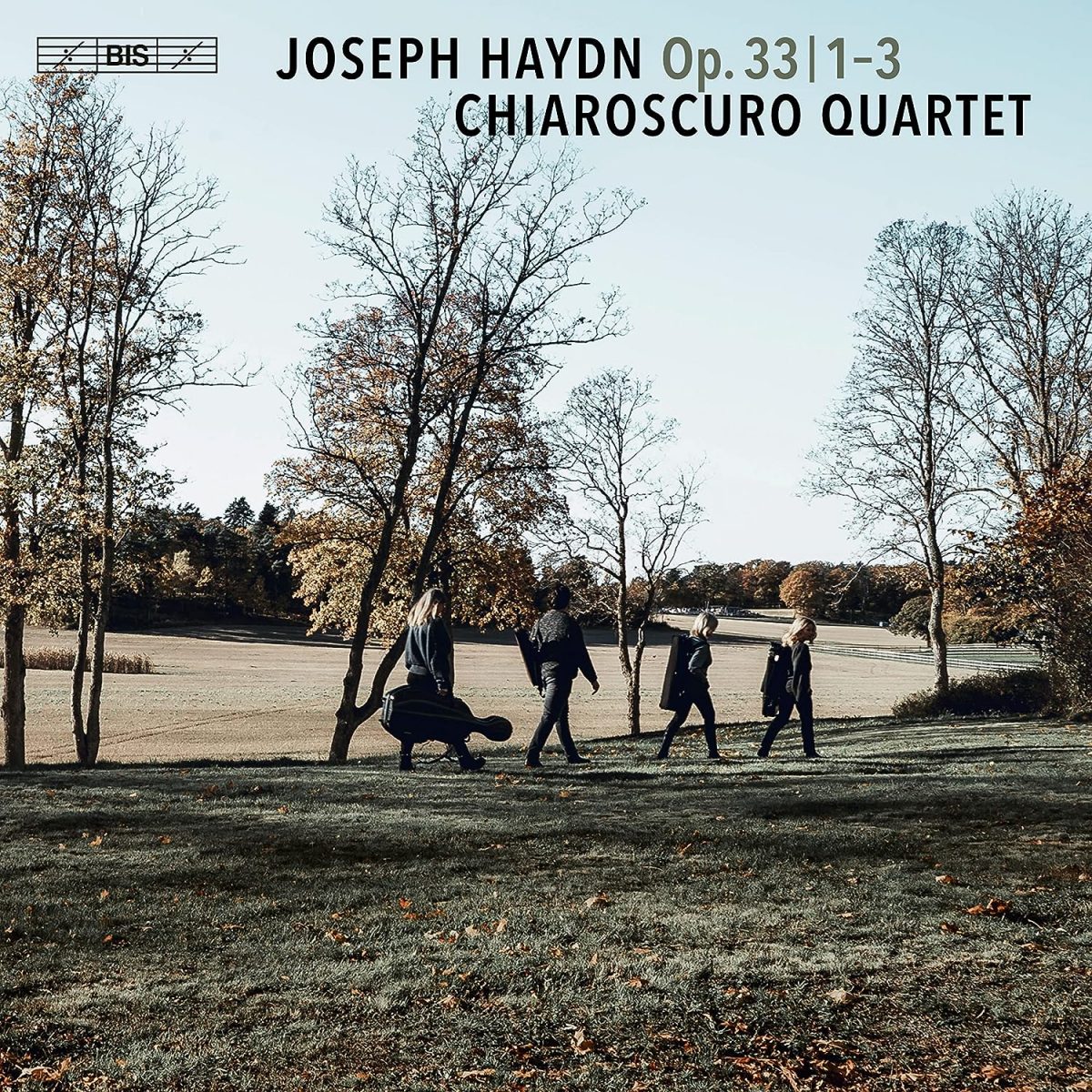Chiaroscuro Quartet
60:44
BIS 2588
Almost certainly the most quoted words on the six string quartets Haydn published in 1781 as opus 33 are those of the composer himself. Addressed to potential subscribers, he informed them that the quartets were written in ‘a new and special way, for I have not published any for ten years’, a reference to the set published as opus 20 (and incidentally recorded by the Chiaroscuro Quartet – see HERE for a review of the first three). Although there are indeed many things about op 33 that are innovative and special, Haydn’s publishing blurb should not, as it has often been, be taken too seriously since it was a standard advertising ploy by composers and publishers to attract attention to their latest offering.
For me, I think the most striking thing about opus 33 is the sense of quest and adventure, of a mature composer who has mastered a new and difficult medium and is prepared not only to exploit that mastery but have a bit of fun along the way. Take the order of movements, for example. In op 20 Haydn’s ‘slow’ movement is placed second – its ‘proper’ place in established practice – in three of the quartets, while in op 33, it comes second in just two quartets. So Haydn is still experimenting, just as is also the case with deciding on either minuet or the rather faster scherzo. Then there is the humour, which with Haydn is never far away. The E-flat Quartet (No 2) was actually given the nickname ‘The Joke’ to mark the breath-taking piece of truly inspired wit that comes at the end of the work, when Haydn suddenly brings the hurtling thrust of the Presto finale to a halt to introduce four bars marked adagio. Pause. What will happen now? Well, a resumption of the Presto but now with pauses of a rest interpolated every few bars. Until the best part of the joke that is, the final six bars of the work, where the silence becomes a whole three bars long. Whether or not the oft-repeated quote attributed to Haydn is true – that he ended the work this way to catch out the ladies who always started talking before the end of a piece – is neither here nor there. It might perhaps be better to hope it isn’t true; in today’s humourless world, it would probably be enough to get Haydn cancelled. This final passage, which is in fact of course technically a coda, is incidentally beautifully handled by the Chiaroscuros.
Another moment to savour in these performances comes the third of the set, the C-major, which also carries a nickname, ‘The Bird’, for reasons that are obvious from the outset, where the frequent acciaccaturas or grace notes convey obvious suggestions of bird calls, as do other ornamental figures. In the development section of the opening Allegro moderato there is a marvellous passage in which Haydn introduces a crescendo with a clear bird call (that of a large bird?) followed by a decrescendo that leads to a few bars marked pp but without the suggestion of slowing the tempo. But here the Chiaroscuros do just that, creating for just a few bars an air of avian mystery and Hitchcockian menace. It’s a supremely effective moment and typical of the imaginative approach of the quartet, who are never afraid to apply judicious rubato or touches of portamento. This appropriate playfulness is one of the distinctive features of performances that constantly delight and impress by dint of superb playing that also shows off Haydn’s wonderful command of counterpoint. This applies especially in the B-minor quartet (No 1), the most ‘learned’ of this group. Here one fully grasps the inspiration that op 33 gave to Mozart to put his own contrapuntal mastery to the test in the six quartets he dedicated to his friend. It’s worth noting that all essential repeats are taken by the Chiaroscuro, that’s to say all but those of the scherzo or minuet da capos.
I concluded my review of the Chiaroscuro Quartet’s opus 20 by expressing the hope they would record opus 33. It’s taken a while but here at least is the first instalment and well worth the wait it is.
Brian Robins
